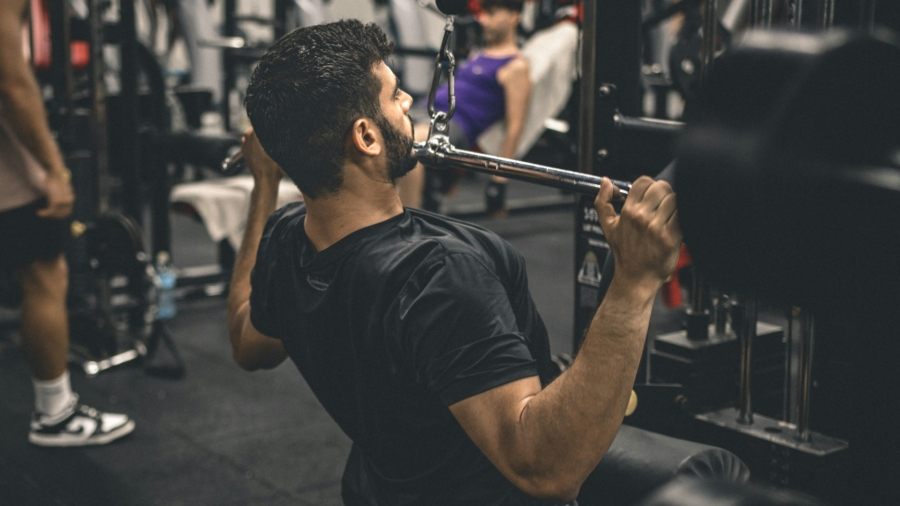Taking care of your body goes beyond just regular exercise. Whether you’re an athlete aiming to enhance performance or someone wanting to reduce everyday aches, physical training has a vital role in keeping you injury-free.
This blog dives into how the right training techniques and body conditioning routines work together to help prevent injuries, supporting a stronger, healthier you. From understanding the science behind injury prevention to practical steps you can adopt, here’s what you’ll learn in this guide.
How Physical Training Helps Prevent Injuries
You might associate training with building muscle or improving endurance, but its impact on injury prevention cannot be overstated. Physical training is a structured approach to strengthening your body while improving flexibility, stability, and mobility.
By addressing physical imbalances, weak muscles, or improper movement patterns, training proactively protects you from common injuries.
When done correctly, physical training acts as an armor for your body. Muscles, joints, and tissues are fortified to withstand strain, reducing the risk of overuse injuries and accidents like muscle pulls, ligament tears, or stress fractures.
The Science Behind Strengthening and Injury Prevention
Physical training impacts the body’s biomechanics, influencing how muscles, tendons, and joints work together. Here’s why this makes a big difference:
- Stronger Muscles Absorb Shock Better:
Muscles act as cushions to absorb impact forces during daily movements, sports, or high-intensity activities. Weak muscles fail to provide this support, directly leading to injuries.
- Enhanced Stability Protects Joints:
Training stabilizes your joints by building surrounding strength. For example, weak knees often result from unstable quadriceps or glutes. Strengthening these areas reduces knee stress.
- Improved Flexibility Equals Reduced Strain:
Tight or stiff muscles are more prone to injury. Stretching and mobility exercises integrated into physical training improves flexibility, allowing easier movement and reducing strain on tissues.
- Reinforced Connective Tissues:
Training strengthens not just your muscles but tendons and ligaments as well. A focus on overall conditioning ensures these vital tissues can handle greater loads without injury.
Incorporating Injury Prevention Into Your Routine
The best part of injury prevention is that it doesn’t require massive lifestyle changes. With consistency, you can add small yet impactful habits to your training routine.
Warm-Up With Purpose
Skipping warm-ups is one of the easiest ways to invite injuries. A proper warm-up session prepares your body for activity by increasing blood flow to muscles, improving joint mobility, and reducing muscle stiffness.
- Spend 5–10 minutes performing dynamic stretches or light cardio exercises to get your muscles ready.
- Tailor your warm-up to the activity you plan to do. For instance, stretch your hamstrings and hip flexors before lower-body workouts.
Strength Through Progressive Overload
Progressive overload involves gradually increasing the demand placed on your muscles as they grow stronger. However, it’s critical to listen to your body and progress at a sustainable pace.
- Include multi-joint compound lifts like squats, deadlifts, and bench presses in your program.
- Focus on proper form instead of rapidly increasing weights. Get guidance from experts like The Barbell Physio if necessary.
Stretching and Mobility Work Shouldn’t Be Optional
Stretching increases your range of motion while soothing tight or fatigued muscles. Complement it with mobility-focused exercises to optimize how joints move.
- Try yoga-based poses, resistance band stretches, or foam rolling for a combined flexibility and mobility boost.
- Dedicate time to areas prone to tightness, such as the back, shoulders, and calves.
Core Conditioning for Total Stability
A strong core stabilizes your entire body, helping prevent injuries ranging from pulled muscles to posture-related issues.
- Plank variations, dead bugs, and Russian twists are excellent core exercises.
- Remember, core strength isn’t limited to abs. Engage your lower back and obliques for balanced results.
Rest and Recovery Matter
Even the best training plan won’t be effective without adequate rest. Recovery allows your body to rebuild and strengthen after exertion.
- Incorporate rest days into your weekly schedule.
- Ice baths, massages, or active recovery activities like walking promote circulation and ease muscle soreness.
Common Mistakes That Lead to Injuries
Despite good intentions, several mistakes can increase injury risks during training. Avoid these pitfalls:
- Neglecting Form:
Improper form puts excess stress on the wrong muscles or joints. Always prioritize technique over weight lifted.
- Overtraining:
Pushing your body without considering its limits can lead to physical burnout or chronic injuries like tendonitis.
- Ignoring Pains or Discomfort:
Small aches can evolve into serious issues if ignored. Listen to your body and modify exercises as needed.
- One-Size-Fits-All Plans:
Everyone’s body is different. Generic workout plans might overlook the specific weaknesses or imbalances you need to work on.
Leveraging Expert Guidance for Injury Prevention
While the foundational steps mentioned above set a solid baseline, the value of customized expert guidance cannot be overstated.
Professionals like The Barbell Physio specialize in creating personalized physical training routines tailored to your unique needs. This ensures no area of your fitness is overlooked, and injury risks are minimized.
Whether you’re training for sport, returning from an injury, or looking to stay fit, seeking expert advice results in better outcomes.
Build a Body That Can Take on Anything
Preventing injuries is all about proactive care and consistency. By incorporating targeted physical training, proper recovery techniques, and expert input, you can significantly reduce injury risks while enjoying the full benefits of an active lifestyle.
Remember that progress is a marathon, not a sprint. Start small, introduce quality training habits, and celebrate every step forward. Your body’s strength and durability will thank you for it.
Looking to step up your training? Get insights and personalized plans at The Barbell Physio, where experts help you optimize your fitness and prevent injuries.

